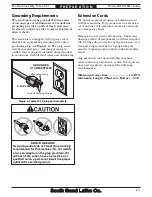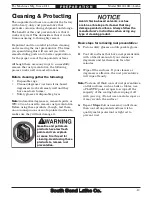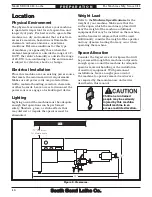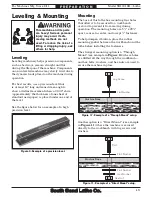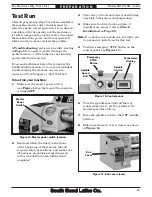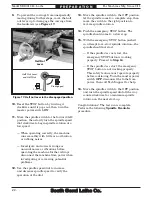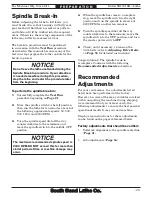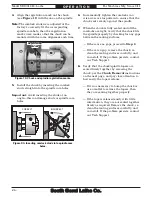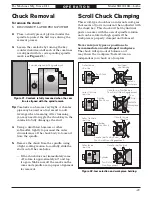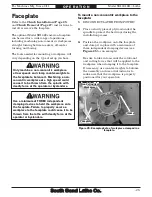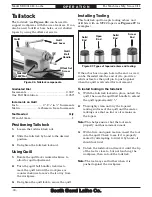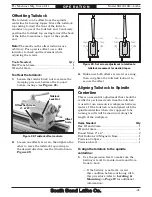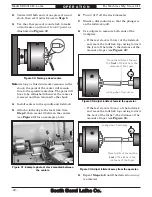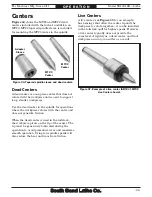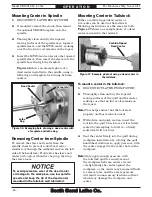
For Machines Mfg. Since 8/11
Model SB1001 8K
™
Lathe
-19-
P R E P A R A T I O N
Leveling & Mounting
Leveling
Figure 9. Example of a precision level.
Leveling machinery helps precision components,
such as bed ways, remain straight and flat
during the lifespan of the machine. Components
on an unleveled machine may slowly twist due to
the dynamic loads placed on the machine during
operation.
For best results, use a precision level that
is at least 12" long and sensitive enough to
show a distinct movement when a 0.003" shim
(approximately the thickness of one sheet of
standard newspaper) is placed under one end of
the level.
See the figure below for an example of a high
precision level.
This machine and its parts
are heavy! Serious personal
injury may occur if safe
moving methods are not
used. To reduce the risk of a
lifting or dropping injury, ask
others for help.
Mounting
The base of this lathe has mounting four holes
that allow it to be secured to a workbench
or stand to prevent it from moving during
operation. The mounting holes are 5
1
⁄
4
" x 29
1
⁄
2
"
apart, center-to-center, and accept
3
⁄
8
" fasteners.
To help dampen vibration, place the rubber
mounting gasket between the workbench and the
lathe before installing the fasteners.
The strongest mounting option is a "Through
Mount" (see example in Figure 10) where holes
are drilled all the way through the workbench—
and hex bolts, washers, and hex nuts are used to
secure the machine in place.
Figure 10. Example of a "Through Mount" setup.
Machine Base
Workbench
Lag Screw
Flat Washer
Another option is a "Direct Mount" (see example
in Figure 11) where the machine is secured
directly to the workbench with lag screws and
washers.
Figure 11. Example of a "Direct Mount" setup.
Machine Base
Workbench
Bolt
Flat Washer
Flat Washer
Lock Washer
Hex Nut











